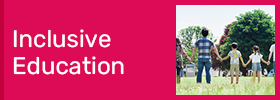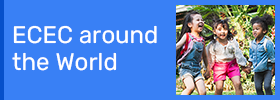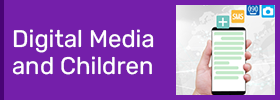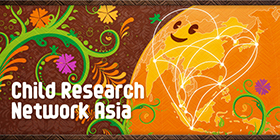"Social Model," the underlying idea
The social model asserts that an individual's disability (which encompasses not only physical impairments but also barriers to societal participation) is not a problem of the individual, but rather a consequence of societal or environmental factors that impose limitations on the individual. Prior to the development of the social model, disability was viewed in a medical model. In other words, disability was seen as a physical and functional problem faced by the individual, which could be addressed through treatment and training to facilitate the individual's adaptation to society. Of course, this does not mean that the medical model is bad. If treatment and training make life easier for the individual, then it is very important to seek medical help. However, the social model was born from the idea that it is different to think of disability as something that must be overcome by the individual or as a problem of the individual (and their family).
In Finland, inclusive education is promoted based on the social model. What surprised me the most when I started researching inclusive education in Finland was that a doctor's or psychologist's diagnosis or written opinion is not required to receive special support at school or daycare. The situation may have changed in Japan by now, but at least until 10 years ago, while I worked as a clinical psychologist, a child with special educational needs did not qualify for support (an extra teaching assistant, or receiving special support services in resource rooms, etc.) without a doctor's diagnosis or the results of a developmental/intelligence test by a psychologist.*1*2 As a psychologist, I wrote opinion letters for children to receive support. Moreover, it was quite common for it to be difficult to get an appointment at hospitals, support centers, and educational centers where psychologists were available, as there was often a waiting list of several months. If you cannot get an appointment for several months, support for the child will be delayed. It was heart-breaking to hear that children in urgent need of support had to wait for several months.
In Finland, implementation of inclusive education is based on a social model, meaning that "whether the child is medically diagnosed with a disability" is not an absolute requirement for determining the provision of support (although a doctor or psychologist may be involved in the assessment if necessary). In Finnish regular schools, there is usually a special needs teacher who is not in charge of a classroom but in charge of special needs support, allowing the homeroom teacher, children, and parents to convene and discuss any issues. If support is deemed necessary, it is provided immediately. From the perspective of the social model, the presence of a problem or stumbling block is seen as indicative of a barrier to social participation. Necessary support is therefore offered as early as possible to eliminate this barrier, and whether a medical diagnosis is made or not is, in the extreme, irrelevant.
History of inclusive education in Finland
Many people may associate "Scandinavian countries," including Finland, as being generous regarding education and welfare. As previously mentioned, Finland employs special-needs teachers who are not classroom teachers in regular schools, suggesting that Finland has more human and physical resources than Japan.
However, it is noteworthy that Finland ratified the Convention on the Rights of Persons with Disabilities in 2016. This prompts the question: "How did Finland manage to establish such a system at such a rapid pace from that point onward?" But that is not the case.
The idea of normalization, which originated in Denmark in the 1950s, spread globally, especially through Scandinavia, including Finland. Furthermore, in the 1970s, a major shift was made from a school system in which children were divided into academic and vocational courses beginning in the fourth grade, as in Germany, to a school system in which all children attended the same school for nine years, spanning from elementary through junior high school.
The focus here was on accommodating diverse children had previously been somewhat divided by academic ability and skills while they studied in a single school. This led to the stationing of a teacher specializing in special needs in each school apart from having a classroom teacher. If a child encountered difficulties in class in some way or needed educational support, the homeroom teacher would ask the special needs teacher to assess the child or to pick up the child's weak areas and work with the child individually or in small groups, or to have the special needs teacher join the class to help the child with their learning (i.e., co-teaching).*3 Therefore, the special needs teacher can also be involved in the class.
Furthermore, in 2011, with the revision of the Basic Education Act, a three-tiered support system was introduced, replacing the previous two-tier concept of normal support and special support (more on this in a future article). Thus, Finland had the foundation for inclusive education even before ratifying the Salamanca Declaration and the Convention on the Rights of Persons with Disabilities.
Who is inclusive education for?
When discussing inclusive education in Japan, the focus is mostly on "how to include children with disabilities or illnesses." Even in Finland, the discussion often focuses on including children with disabilities. But why so, when it is defined by UNESCO and other organizations that inclusive education is for all children regardless of gender, race, disability, or socioeconomic and cultural background of the family? Perhaps what is common in both countries is that they are already well-established in providing equal education to male and female and have fewer immigrants than other countries. By starting my research here and having the opportunity to talk with inclusive education researchers from various countries, I have learned that the definitions, targets, and struggles of inclusive education are very different depending on the country's background.
For example, in Austria, where the rate of immigrants is higher than in Finland, a major challenge is including children with different cultural backgrounds and languages. In countries where girls are not yet given equal educational opportunities, ensuring equal educational opportunities for both boys and girls is an issue. There, I realized anew that there is no "correct answer" to inclusive education, because it is intricately related to the religious values, history, and culture of the country. I believe that inclusive education can be described as a process of considering the various backgrounds of each country and creating a unique process towards inclusive education.
However, some researchers do not use the term "inclusive education" or use it for convenience. This is because when discussing "inclusion," positions of those being excluded and those doing the including inevitably arise. Instead, some researchers say it is about "Good education for everyone," or others say, "Not special education, but education is special for all." I constantly think about who inclusive education is for, what kind of background Japan has, and how we can develop a system for inclusive education unique to Japan, learning from examples from other countries.
Notes
- *1: To assign more teachers and staff than the placement standards.
- *2: To provide students with mild disabilities enrolled in regular elementary and junior high schools with special instruction for their disabilities in a separate setting.
Reference article: Yuko Nagata, "Vol. 12 Introduction of SST (social skills training) incorporating digital media, which can be used for instruction by day class," Child Research Net, Inc.
https://www.blog.crn.or.jp/lab/04/12.html (in Japanese) - *3: Co-teaching is a collaborative approach where two teachers are equally responsible for teaching and proceeding with the class; slightly different from "Team teaching," which is a common term in Japan, where the roles of the two teachers are divided into T1, mainly leading the class, and T2, assisting them.
References
- Mitchell, D. (2005). Introduction: Sixteen propositions on the contexts of inclusive education. In D. Mitchell (Ed.), Contextualizing inclusive education: Evaluating old and new international perspectives (pp. 1-21). London: Routledge.
- Savolainen, H. (2009). Responding to diversity and striving for excellence: The case of Finland.
- UNESCO (2009). Policy guidelines on inclusion in education. Paris, France: UNESCO.
- Yada, A. (2020). Different processes towards inclusion: A cross-cultural investigation of teachers' self-efficacy in Japan and Finland.
Available at: https://jyx.jyu.fi/bitstream/handle/123456789/67827/978-951-39-8073-3_vaitos_2020_02_28.pdf?sequence=1

Ph.D. (Education), University of Jyväskylä, Finland; Licensed Psychologist and former Clinical Psychologist, Japan. She is currently a post-doctoral researcher at the Centre of Excellence for Learning Dynamics and Intervention Research (InterLearn), University of Jyväskylä and University of Turku, and a visiting researcher at the Center for Sustainable Development Studies, Toyo University.
After completing the master’s degree program at Aoyama Gakuin University, she worked as a clinical psychologist for six years at a child developmental center, a child psychiatry clinic, and an elementary school. She mainly provided counseling and consultation to children with special needs and their parents and teachers.
Interested in inclusive education, where children with and without special needs learn together in the same place, she moved to Finland with her husband in 2013. She continues her research on inclusive education. Based on her experience of childbirth and childcare in Finland, she is also interested in Finnish neuvola, early childhood education, and social welfare systems. She has conducted extensive research on these topics.














